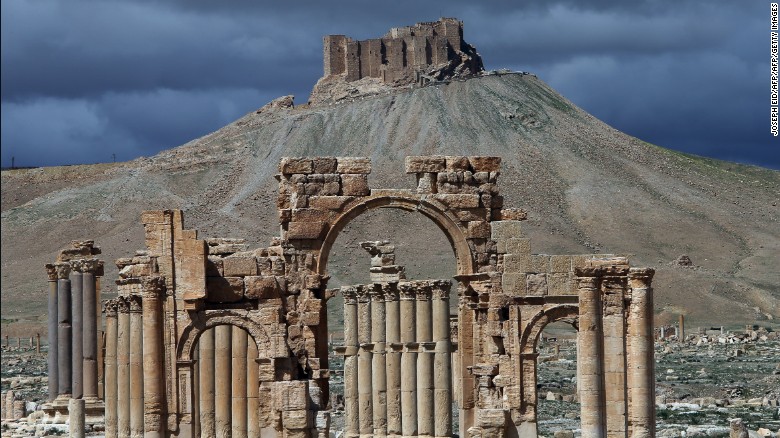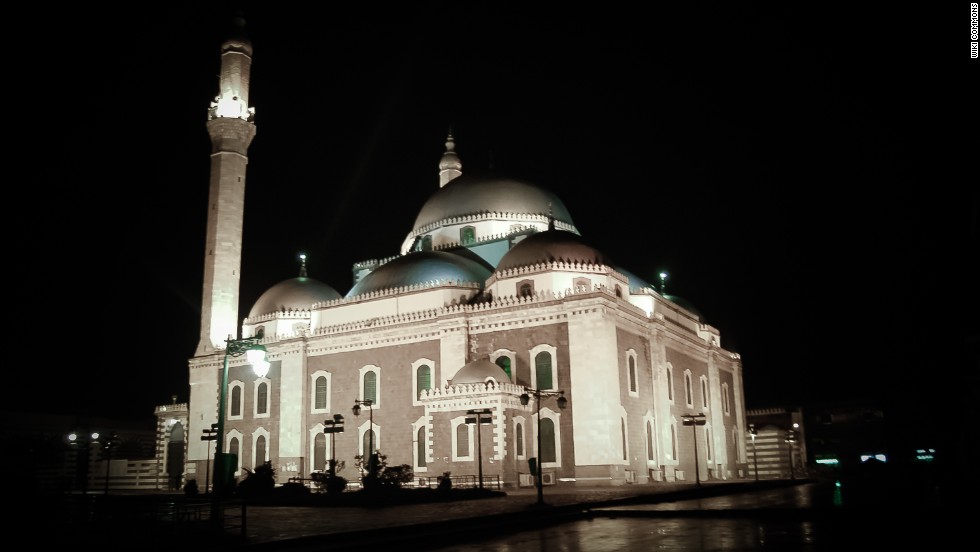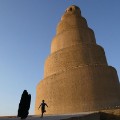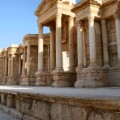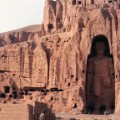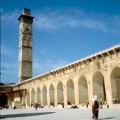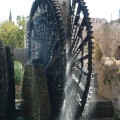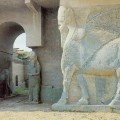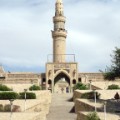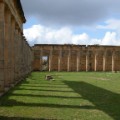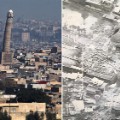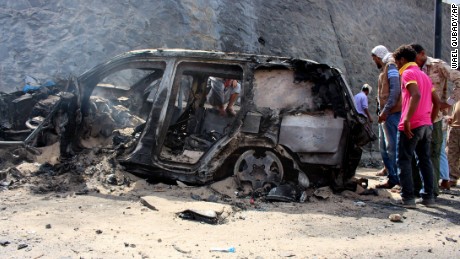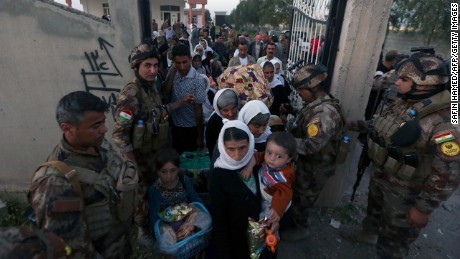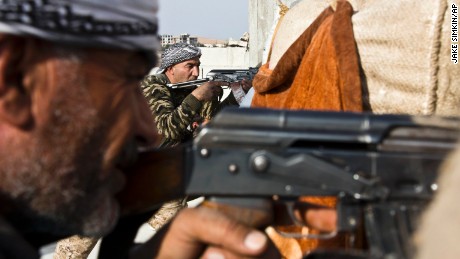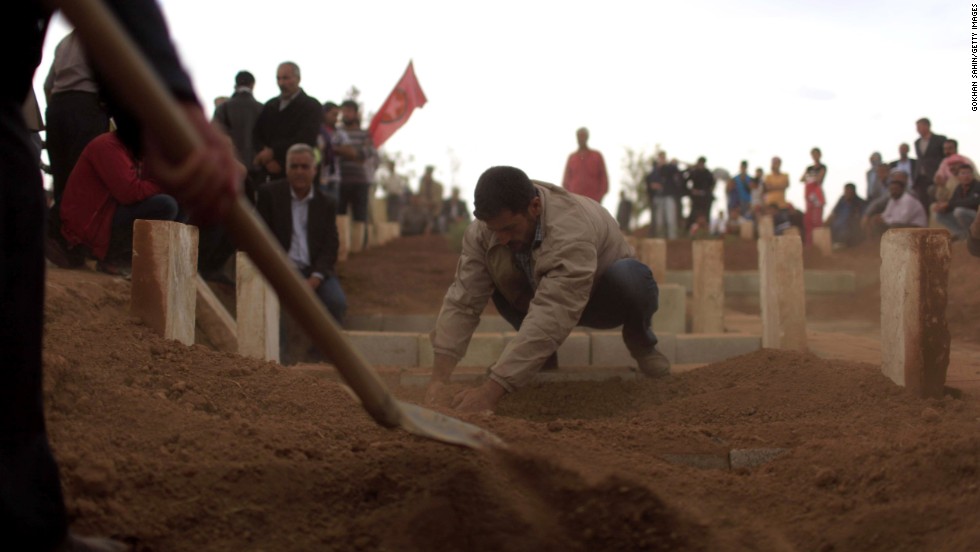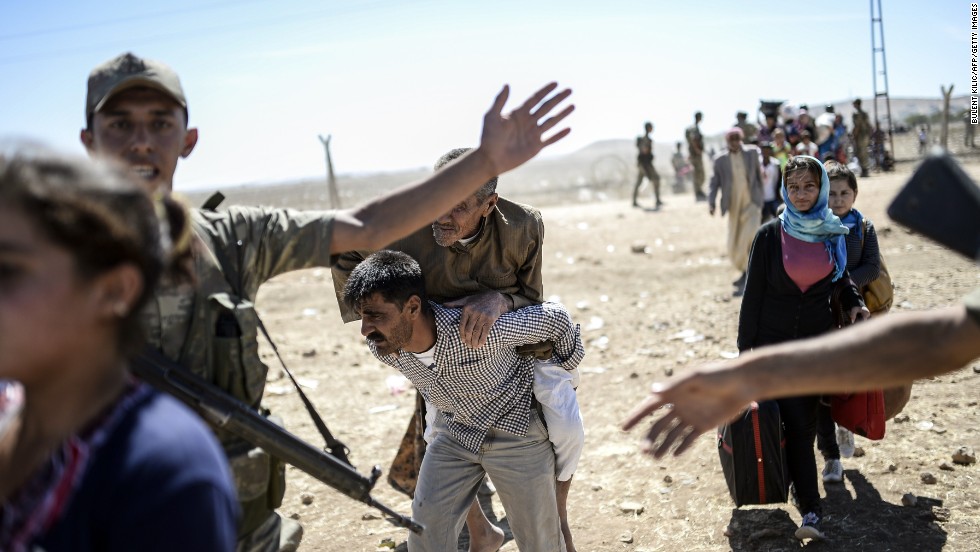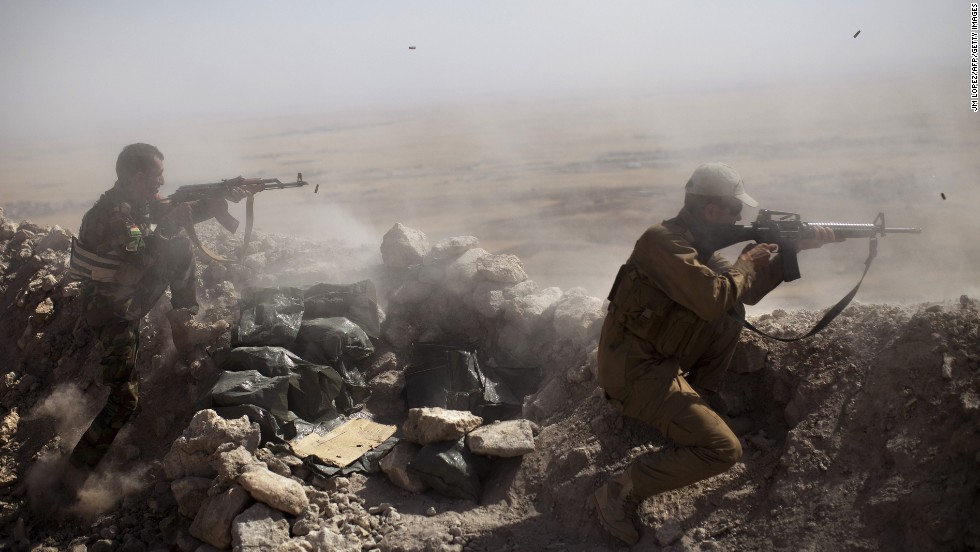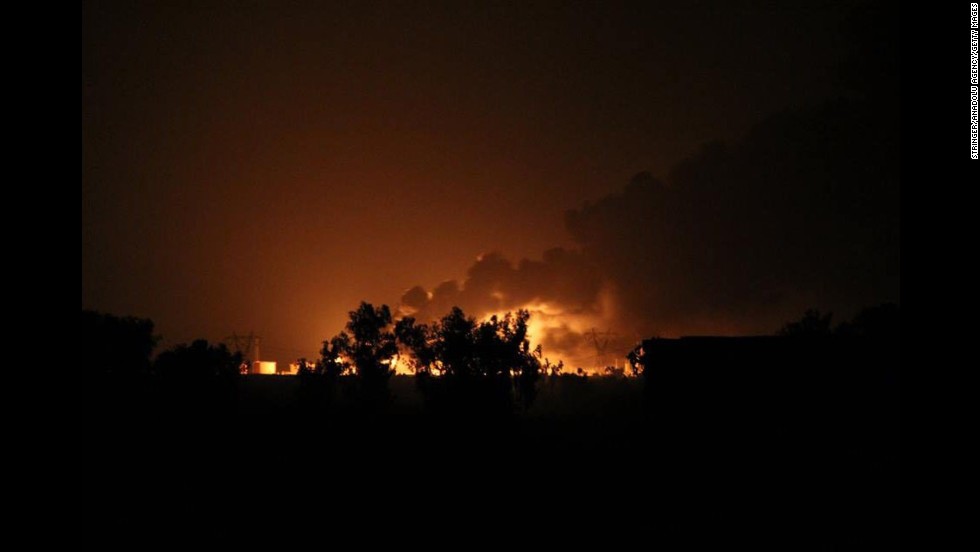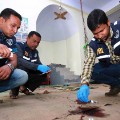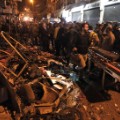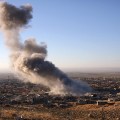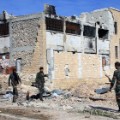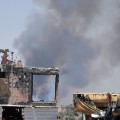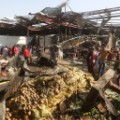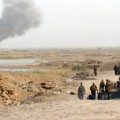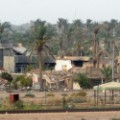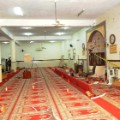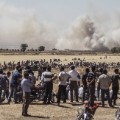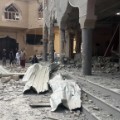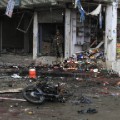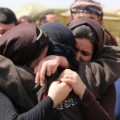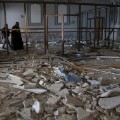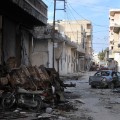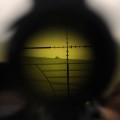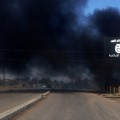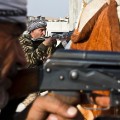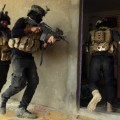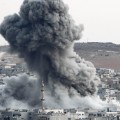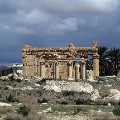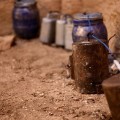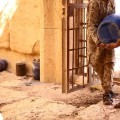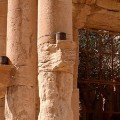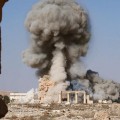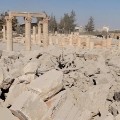Story highlights
- Syrian army and popular defense group retake Syriatel hill near Palmyra Castle
- ISIS releases a video saying it still controls Playmyra
- State TV broadcasts images purportedly showing Syrian forces in southwest Palmyra
(CNN)Palmyra Castle was taken from ISIS by the Syrian army as it marched toward the terror fighters commanding the ancient city of Palmyra, state-run media said Friday.
The army, joined by popular defense groups, took control over the Syriatel hill near the Palmyra Castle. The government forces destroyed ISIS hideouts, leaving a number of terrorists killed and others fleeing toward Palmyra, Syria's state news agency SANA said, citing an unidentified military source.
The Syrian army dismantled explosives ISIS left behind, the agency said.
The seizure of the ancient hilltop citadel formally known as Fakhr-al-Din al-Maani Castle -- part of a UNESCO World Heritage Site -- comes as Syrian troops enter Palmyra in an effort to reclaim it from ISIS, state media state.
State TV broadcast images on Thursday that purportedly show government forces entering the southwestern part of the city, while a TV anchor said the army is "close to announcing that Tadmur" -- another name for the area around Palmyra's historic ruins -- "has been cleared of ISIS terrorists."
ISIS took over the central Syrian city last May, expanding its conquests in the region and showing its contempt for the people and their history.
By June, the Islamic extremist group began destroying historical sites. The Syrian government said ISIS destroyed two Muslim holy sites: a 500-year-old shrine and a tomb where a descendant of the Prophet Mohammed's cousin was reportedly buried.
Two months later ISIS destroyed more antiquities, including the 1,800-year-old Arch of Triumph that framed the approach to the city and the nearly 2,000-year-old Temple of Baalshamin. ISIS also beheaded the antiquities expert who looked after the ruins.
UNESCO, the U.N. agency that compiles a list of the world's most important cultural and natural sites, called the temple's destruction a war crime.
Palmyra, in the Homs countryside northeast of Damascus, was a caravan oasis when Romans overtook it in the mid-first century. In the centuries that followed, the area "stood at the crossroads of several civilizations" with its art and architecture mixing Greek, Roman and Persian influences, according to UNESCO.
ISIS says it's still in control
After the news that Syrian troops were poised to retake Palmyra, ISIS released a video to prove it still controls the city.
The video shows the city's deserted streets and then cuts to an ISIS militant sitting on a tank, in an indistinct desert location, saying the group will defeat any forces that try to enter the city. Also in the video is a panoramic shot of Palmyra's ruined historical site, taken from a distance.
CNN cannot independently verify the video's authenticity.
The Syrian Observatory for Human Rights, a London-based monitoring group, said Thursday that Syrian troops received help from their warplanes and those of Russia while clashing with ISIS fighters. The troops were a few hundred yards from a main southwest entrance into the city, the group said.
Russian advisers were providing support to the Syrian forces, according to SOHR.
The official Syrian Arab News Agency reported Thursday that Syria's army took over three locations west of Palmyra -- al-Qubour Valley, al-Qusour Mountain and al-Tar Mountain -- and that troops "eliminated, to the last one" all ISIS factions in that area.
The agency cited a military source.
The Syrian army "killed or injured all ISIS terrorists at Dedeman Hotel" and at a traffic circle near Palmyra's southwestern entrance, according to the same report.
History destroyed
Irina Bokova, of UNESCO, praised the news that Syrian troops had entered the city.
"I welcome the liberation of the Palmyra archeological site, martyr city inscribed on the UNESCO World Heritage List, which carries the memory of the Syrian people, and the values of cultural diversity, tolerance and openness that have made this region a cradle of civilization," she said in a statement.
Among the other ISIS-destroyed historical sites in Palmyra are the Temple of Bel, which dated to 32 A.D.; the 1,900-year-old lion statue that stood at the entrance to the city's museum; and three ancient tower tombs dating as far back as 44 A.D, including the Tower of Elahbel, built in 103 A.D. and regarded as the finest example of this type of building, SANA reported.
"For one year, Palmyra has been a symbol of the cultural cleansing plaguing the Middle East," Bokova said.
"As soon as security conditions allow, UNESCO is ready to go to Palmyra with those responsible for Syrian antiquities on a mission to evaluate damage and protect the priceless heritage of the city of Palmyra, crossroad of cultures since the dawn of humanity," she said. "The deliberate destruction of heritage is a war crime, and UNESCO will do everything in its power to document the damage so that these crimes do not go unpunished."

